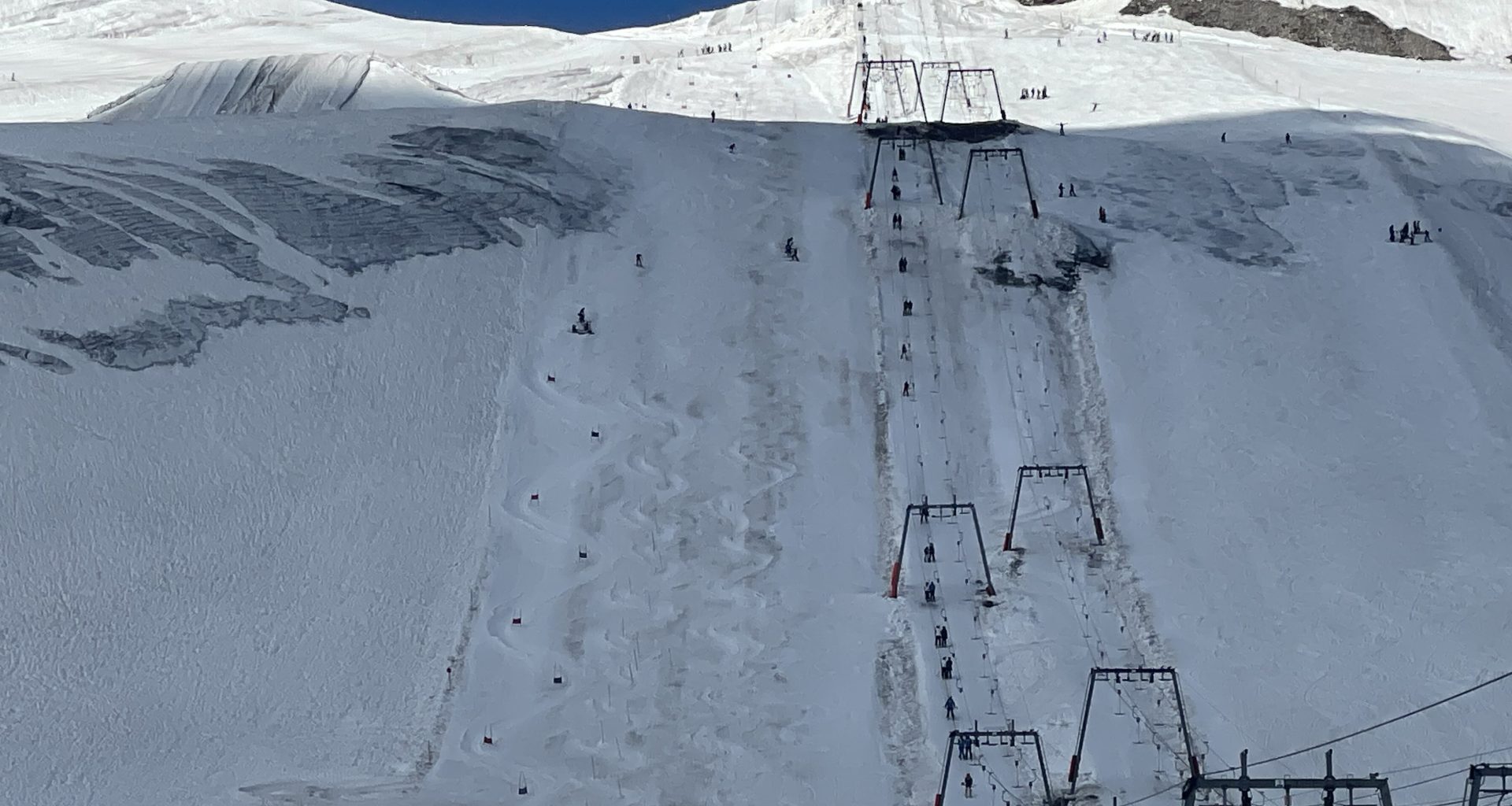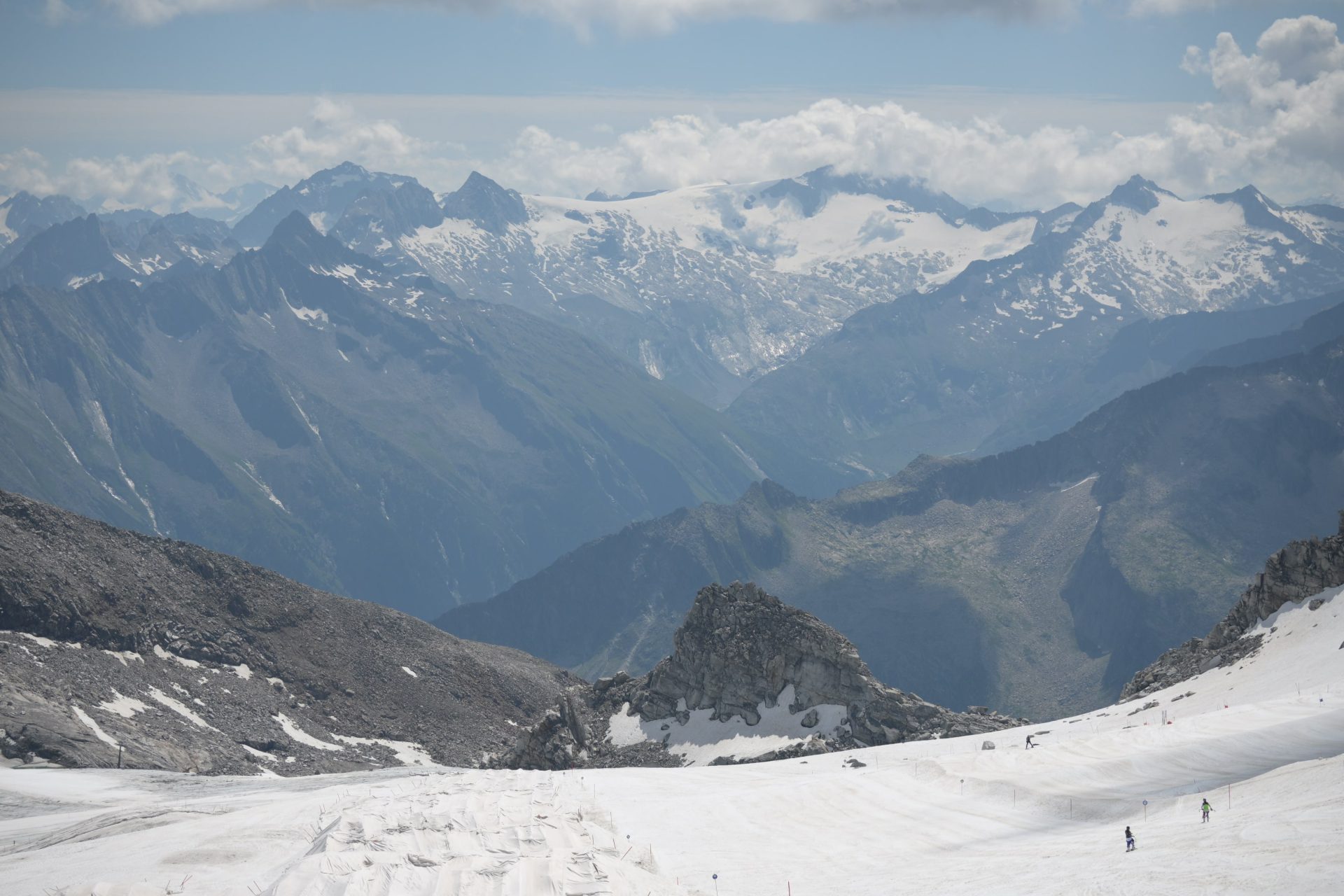
 The magnificent view from the top of the Hintertux Glacier. Source: David Michael
The magnificent view from the top of the Hintertux Glacier. Source: David Michael
June 30-July 4, 2025
After years of hearing about year-round glacier skiing in Europe, I joined a friend to train in early July on the famous Hintertux Glacier in Austria with Austrian Race Camps. With the shortened season at Killington this year (closing date was May 10), I still felt the need to get some more turns before the inevitable off-season. Getting a chance to ski on a real glacier was exciting. It gave me a firsthand look at what European ski culture is like during the off-season, though given that they can stay open year-round, perhaps off-season is a misnomer.
What struck me was the similarity of the conditions to those of late spring skiing in the East, and in particular, Killington. Many Eastern skiers get their last laps of the season on Superstar. Generally, the hill gets a good freeze at night, and the surface will be hard early in the morning, soften by mid-morning, and become heavy later in the day. Skiing these conditions prepared me for being out on a “real glacier” and I felt right at home despite the elevation and the lack of trees.
Europe’s massive heatwave at the time did have an impact on snow conditions. With much of the continent experiencing record high temperatures, the snowfields at Hinterux were not freezing at night, and the surface was soft in the morning. There was good coverage despite the warm weather. The best skiing was early, usually the first couple of hours, before courses developed deep ruts. In some sections, there was glacier ice, which has more grip and is easier to ski on than ice in the Northeast.
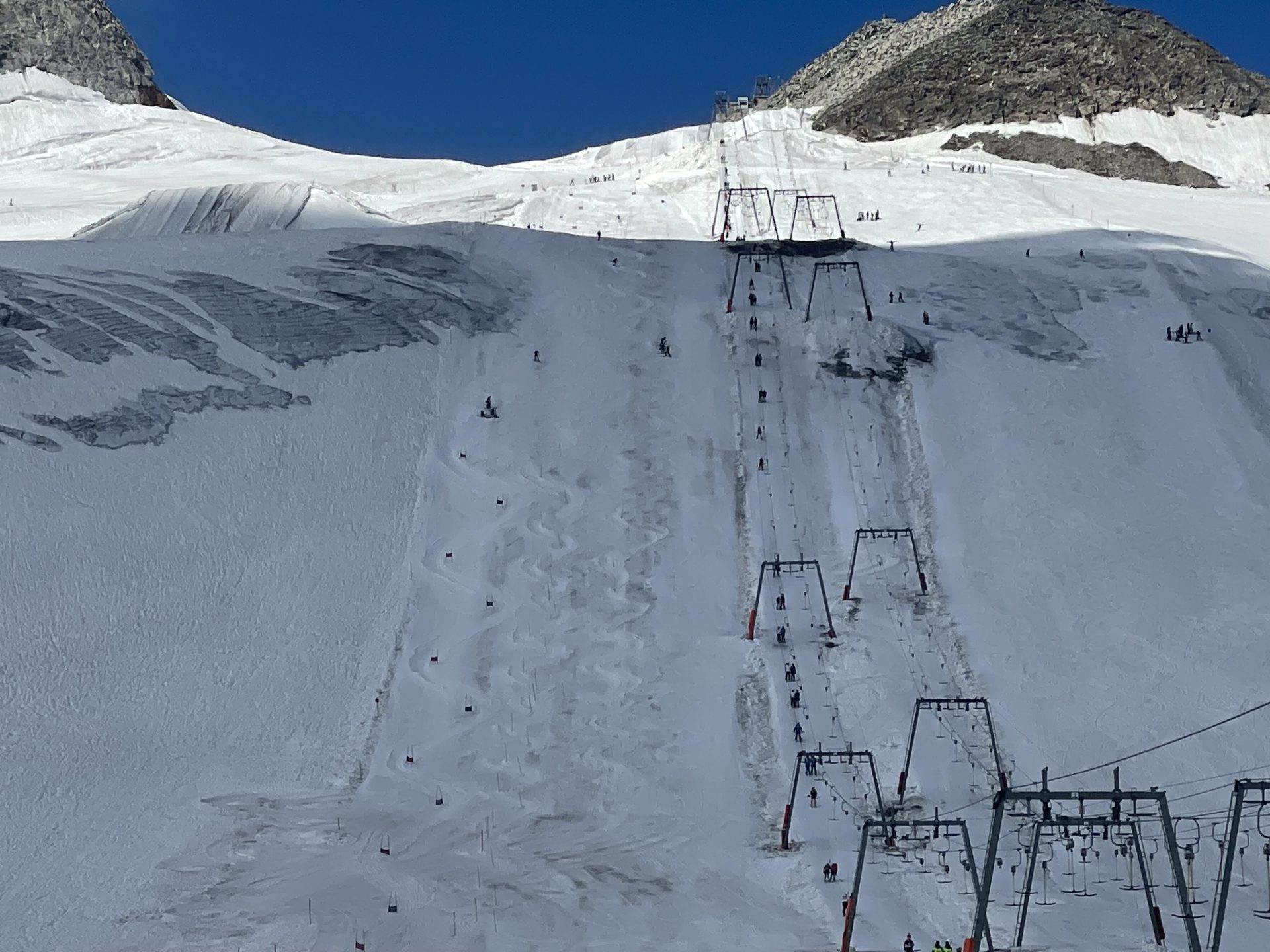
 A view of one of the pistes reserved for race training. The piste to the right of the T-bar was open for free skiing. Glacier ice is visible on both pistes. Source: David Michael
A view of one of the pistes reserved for race training. The piste to the right of the T-bar was open for free skiing. Glacier ice is visible on both pistes. Source: David Michael
The ski day would start early; the lift line was crowded by 8 a.m. and the gondola would open by 8:15. If you go, be prepared for the famous European surge-style lift lines! By 9, we would be up on the snowfields taking early warm-up runs and inspecting the courses set by the coaches. It was warm, upper 30s and in the 40s. By early afternoon, the training was done and we would head back down the hill to enjoy the alpine spring weather in the valley. Skiers have to be careful and watch the terrain closely. On day 3 of the trip, a crevasse opened in spots across the training piste. Coaches marked where there were holes, but you had to be very careful to ski through quickly and not stand in the area around the crevasse in case the surface broke through. The lifts were closed for skiing by 1:30 p.m. each day; however, the lower gondolas remain open so one can ride up to hike, mountain bike, and rock climb.
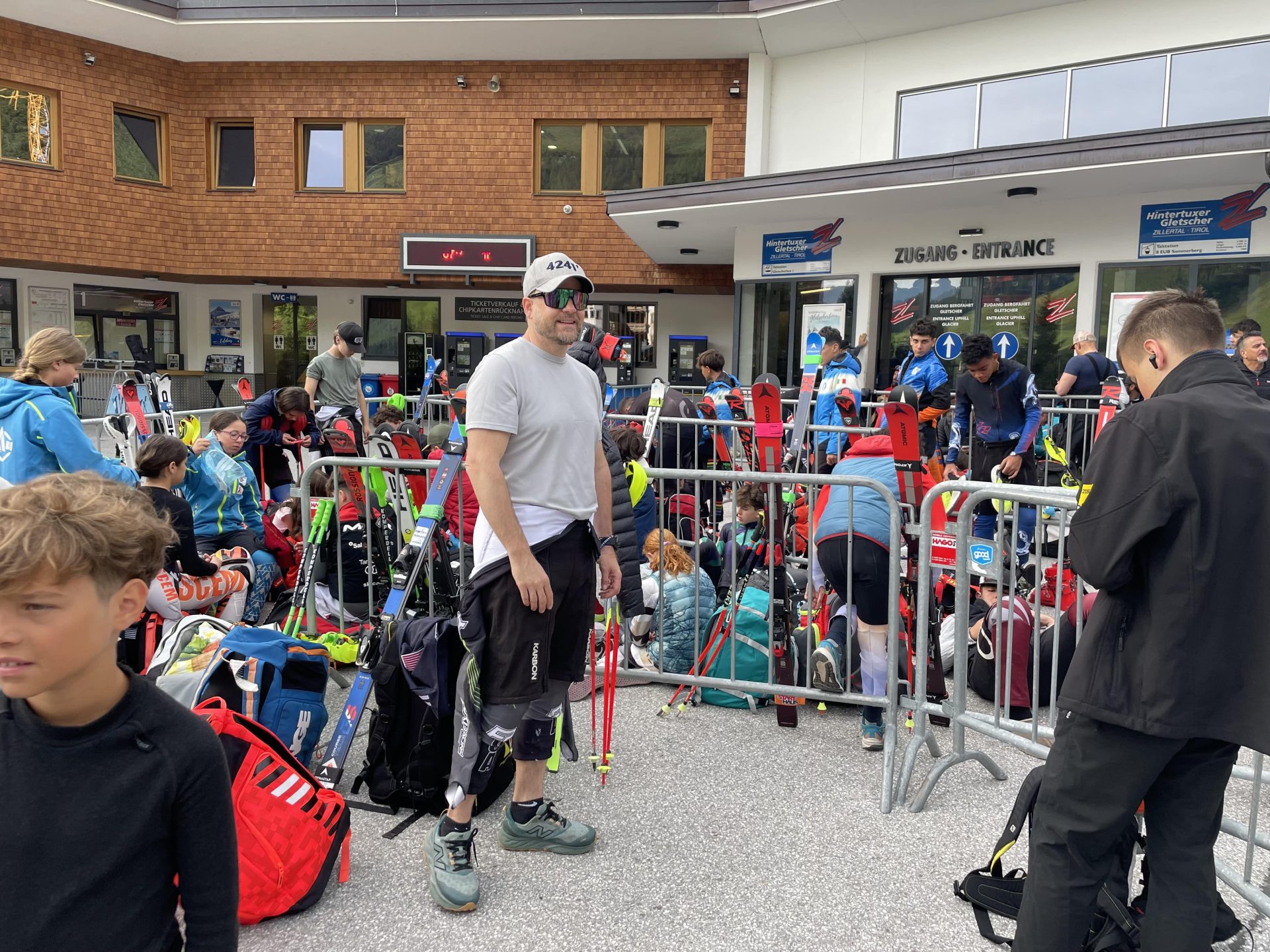
 Racers queuing up for the early morning gondola. Source: David Michael
Racers queuing up for the early morning gondola. Source: David Michael
There were racers and mogul skiers from Europe, the United States, and even Asia attending training camps along with ski academies that were training ski instructors for European credentialing. The pistes were set up for the programs, but there was also open terrain for freeskiers.
As fate would have it, right after I left, it got cold again and they received close to a foot of fresh snow. If you travel to Europe to ski in the summer, you have to be prepared for both warm and cold weather, so bring your layers, and yes, even your rain gear.
This is a long way to travel for a half day of skiing, so I would be hesitant to recommend this unless you are interested in attending a specific camp for training or instruction. If you are a local and it isn’t difficult to get to the area, then I would recommend it for freeskiing to keep in shape and to enjoy getting some turns, even though the terrain is limited to the upper snowfields. Overall, it was a great experience and it gave me a chance to experience European racing culture along with coaching from Austrians; from that perspective, it was worth the trip.
Snow Conditions
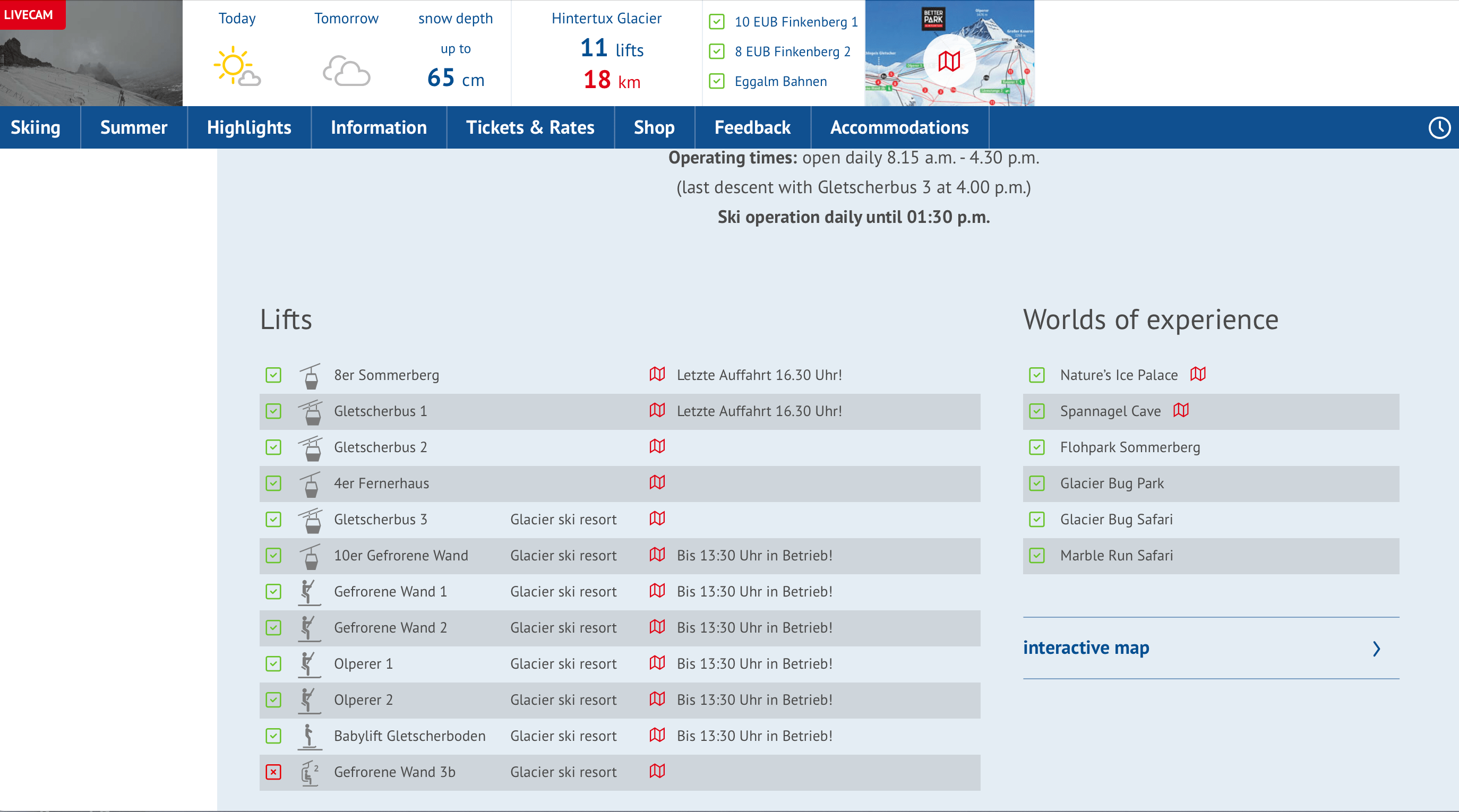

Weather
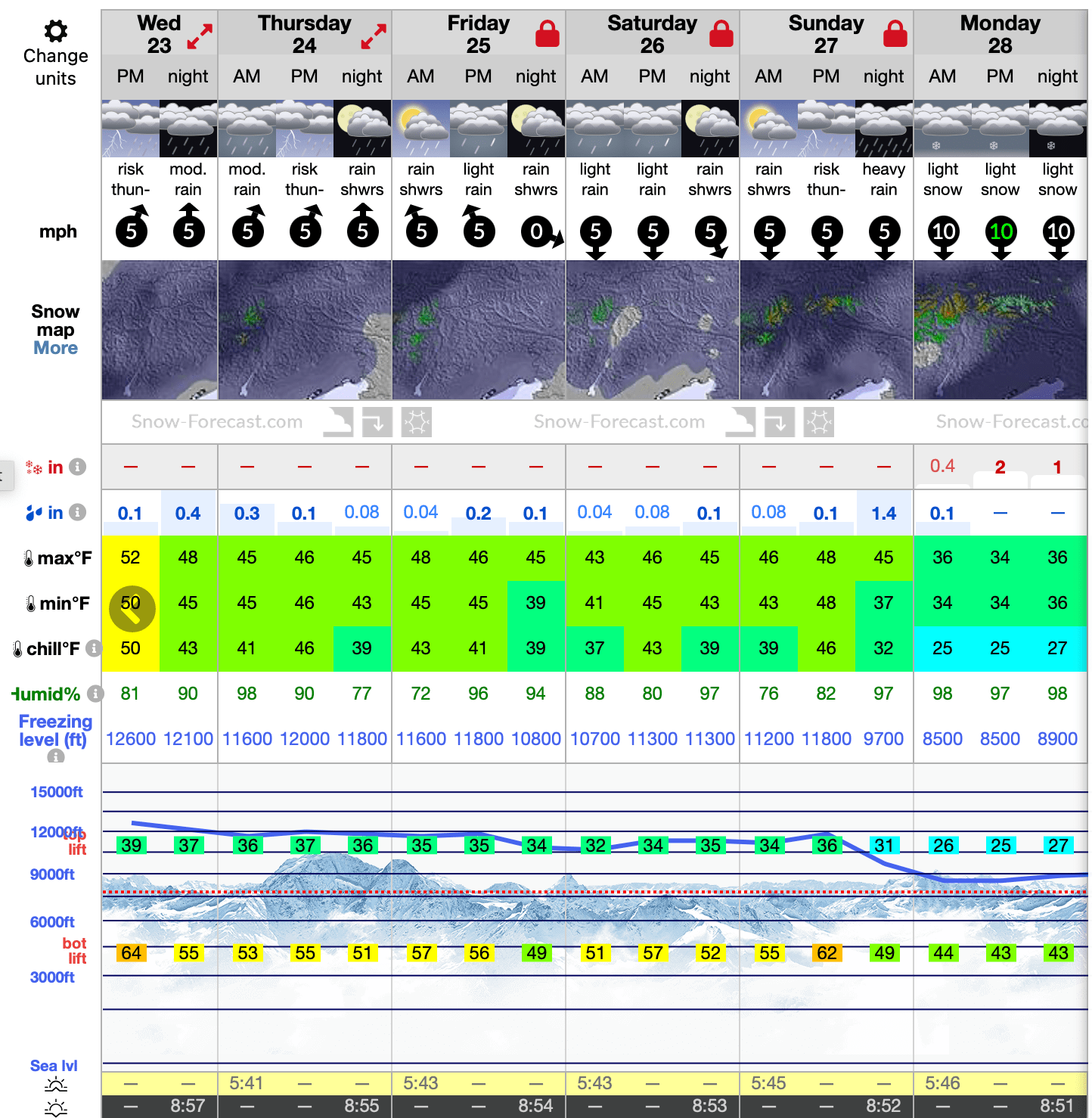

Photos
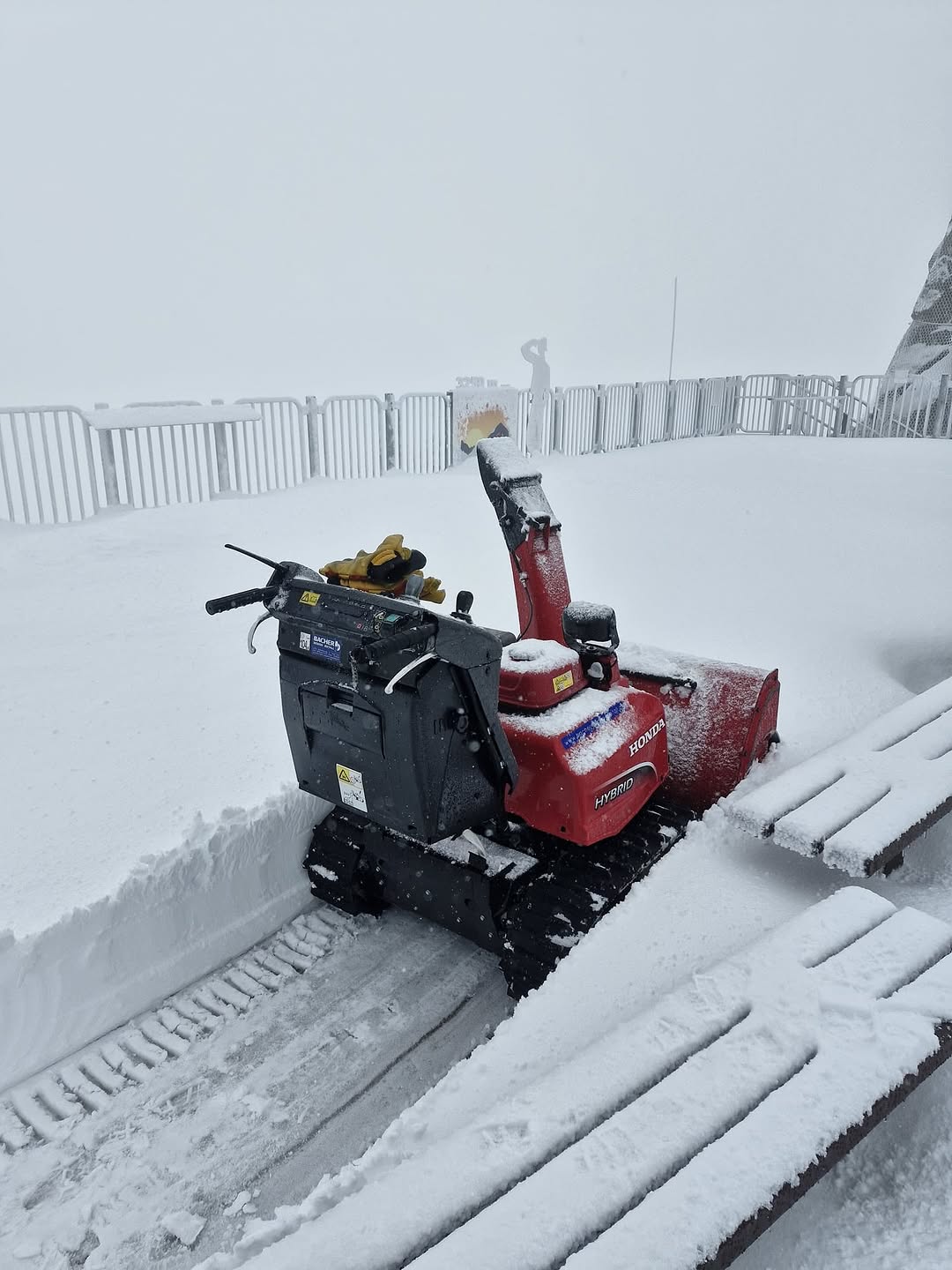
 The skiers lament! Fresh snow on the glacier, which fell 2 days after I left. Source: Hintertuxer Gletscher IG
The skiers lament! Fresh snow on the glacier, which fell 2 days after I left. Source: Hintertuxer Gletscher IG
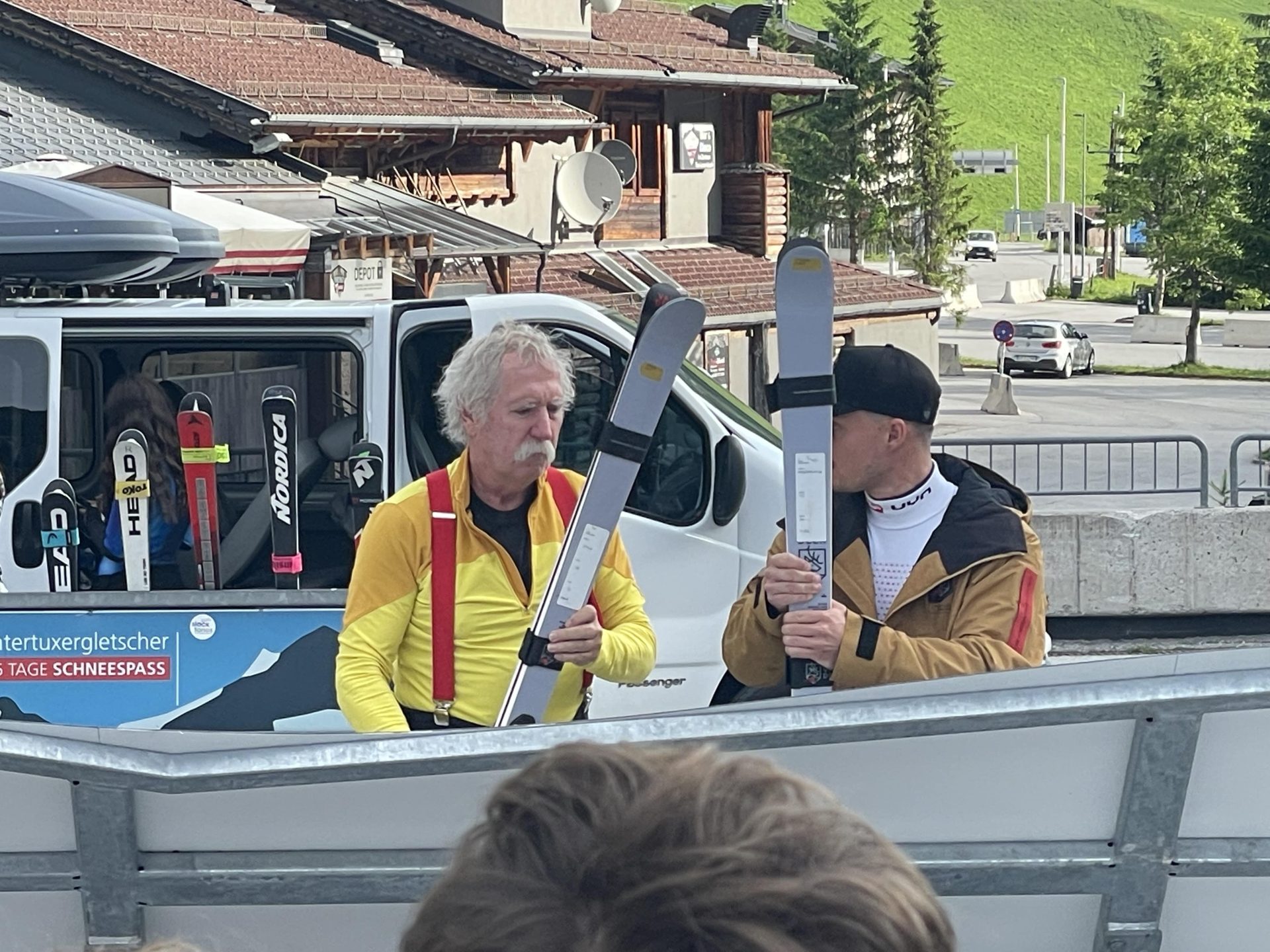
 You never know who will show up to train: Ferdinand Hirscher, father and coach of the famous Austrian World Cup champion Marcel Hirscher, is out with some of his athletes testing their Van Deer skis. He did not have to wait in line! Source: David Michael
You never know who will show up to train: Ferdinand Hirscher, father and coach of the famous Austrian World Cup champion Marcel Hirscher, is out with some of his athletes testing their Van Deer skis. He did not have to wait in line! Source: David Michael
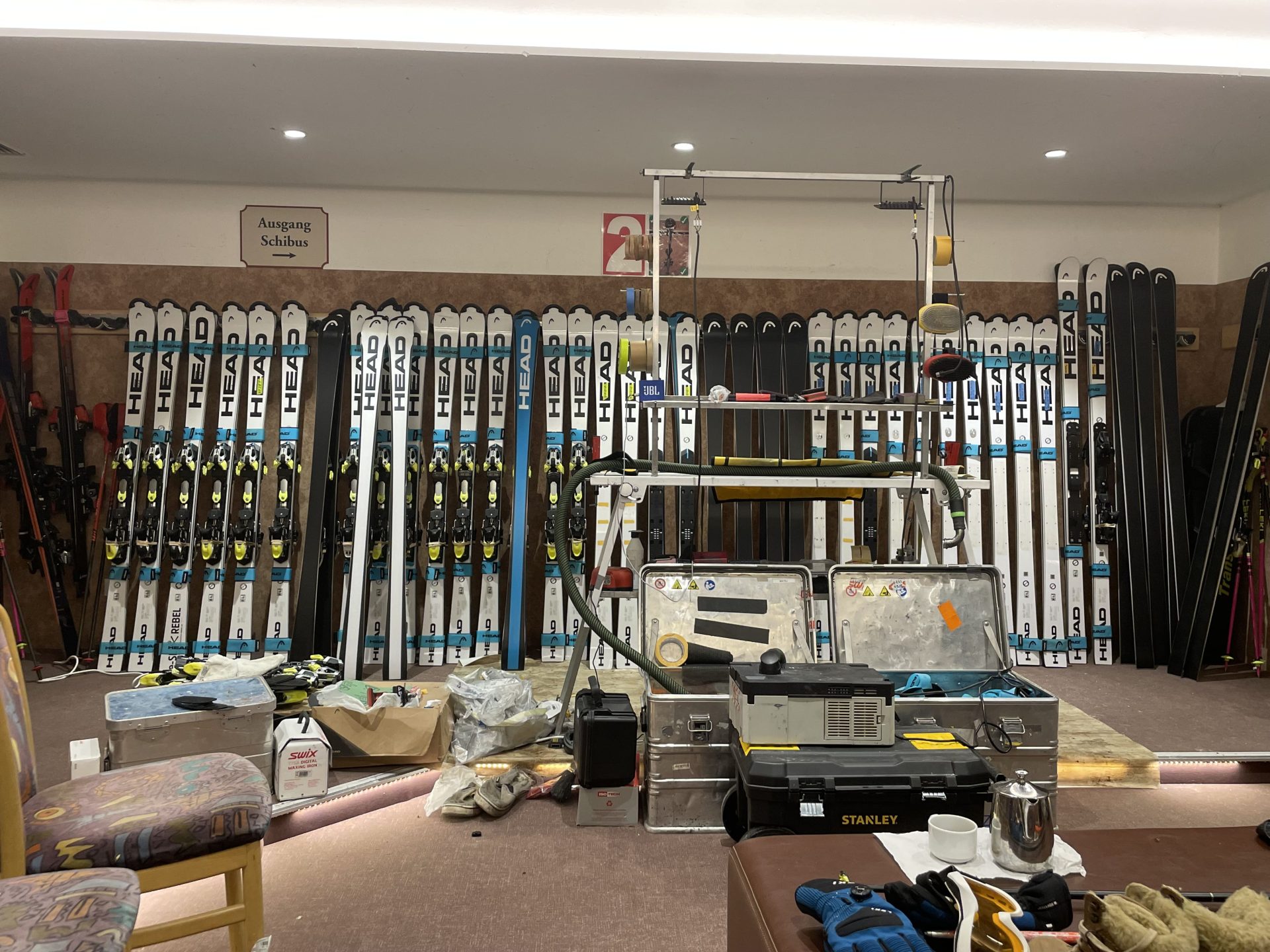
 Armand Marchant’s (Belgium Racer) arsenal in the hotel’s ski storage room; he travels with 40 pairs of skis to test. Source: David Michael
Armand Marchant’s (Belgium Racer) arsenal in the hotel’s ski storage room; he travels with 40 pairs of skis to test. Source: David Michael
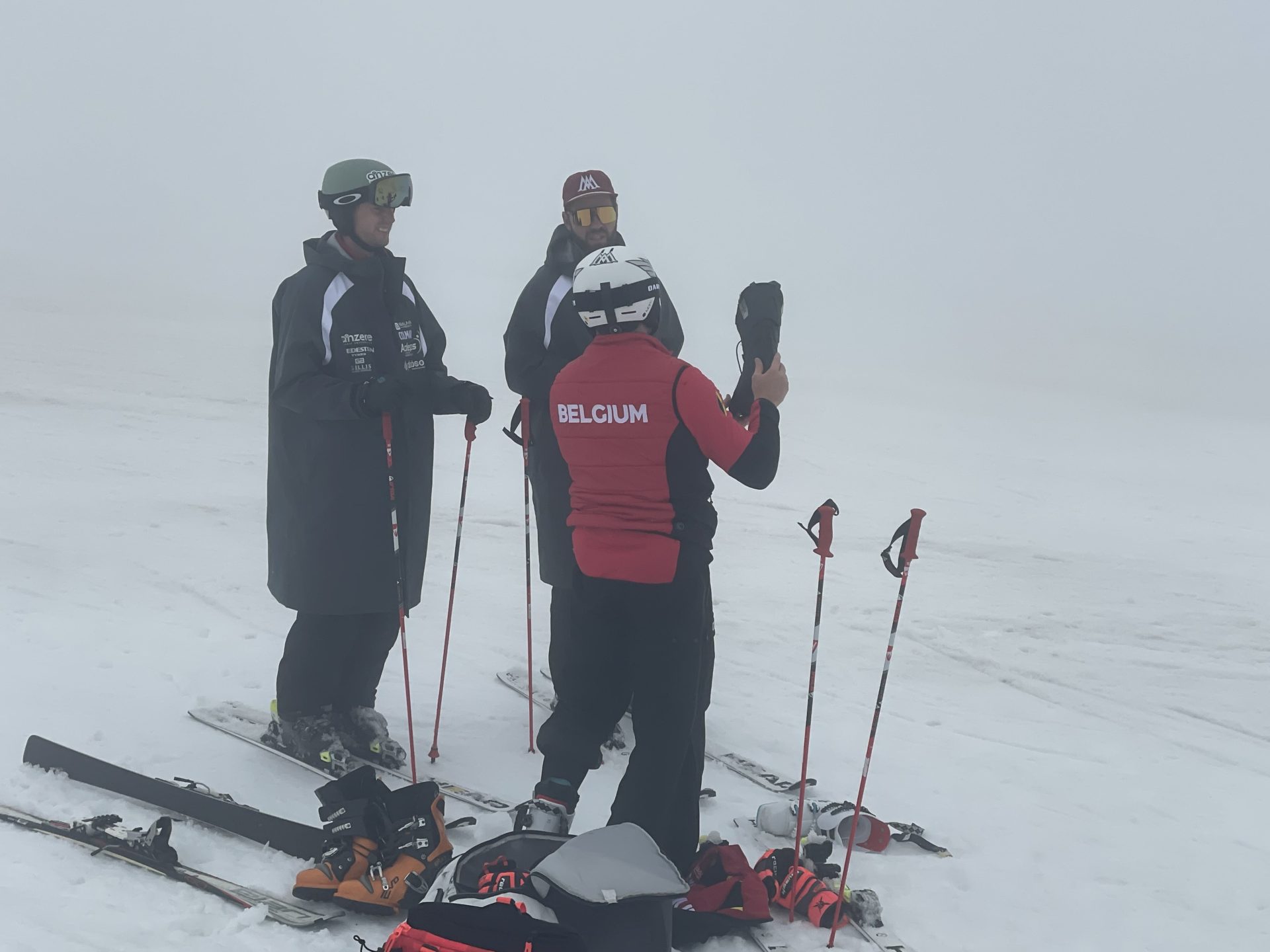
 Belgium Slalom specialist Armand Marchant conferring with his coaches. These were his first days back on snow after missing last season due to injury. Source: David Michael
Belgium Slalom specialist Armand Marchant conferring with his coaches. These were his first days back on snow after missing last season due to injury. Source: David Michael
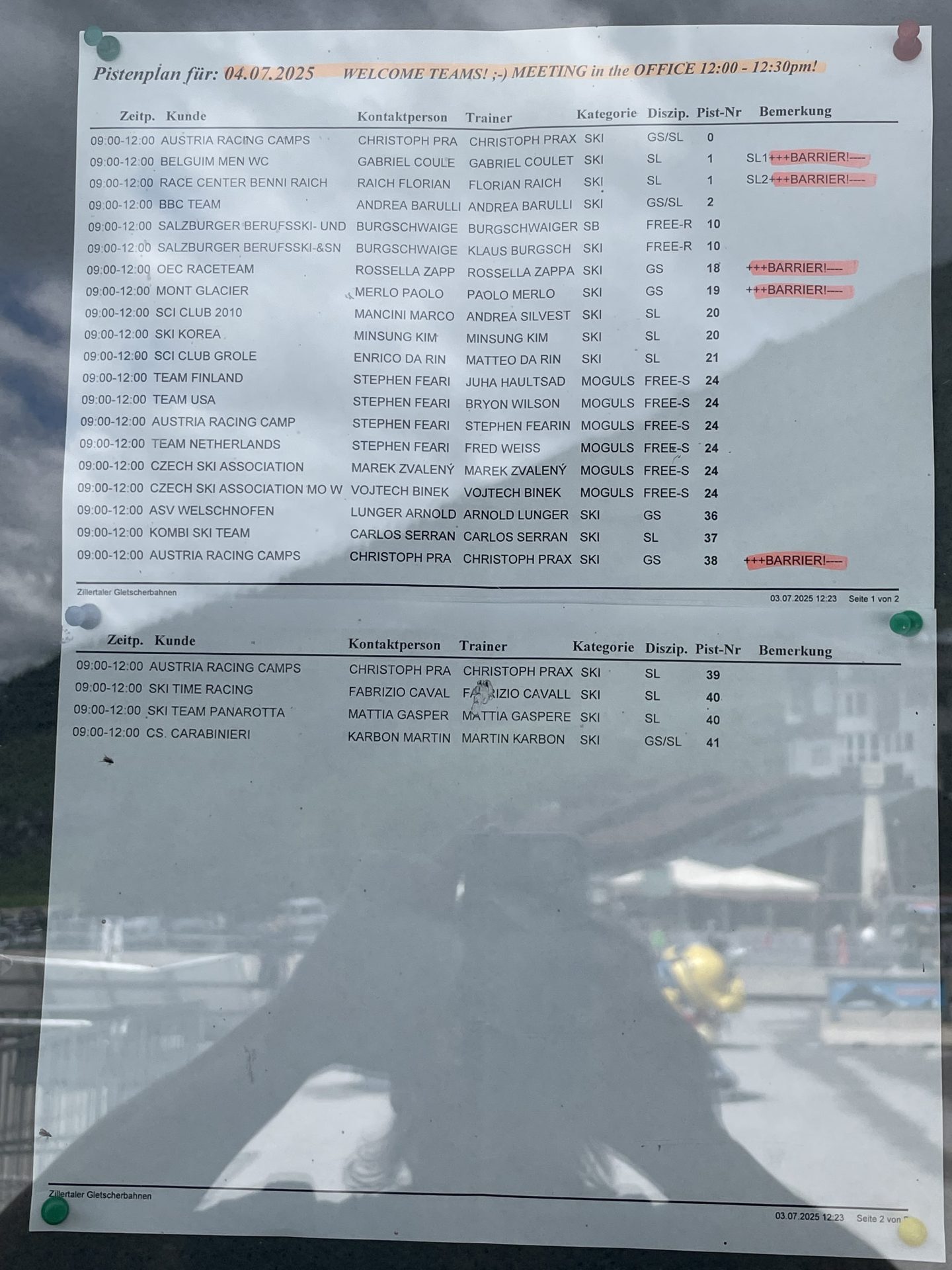
 Daily piste assignments are posted after the coaches meet with Hintertux officials. Source: David Michael
Daily piste assignments are posted after the coaches meet with Hintertux officials. Source: David Michael

 Hintertux Glacier, Austria, as seen from the valley. Source: David Michael
Hintertux Glacier, Austria, as seen from the valley. Source: David Michael
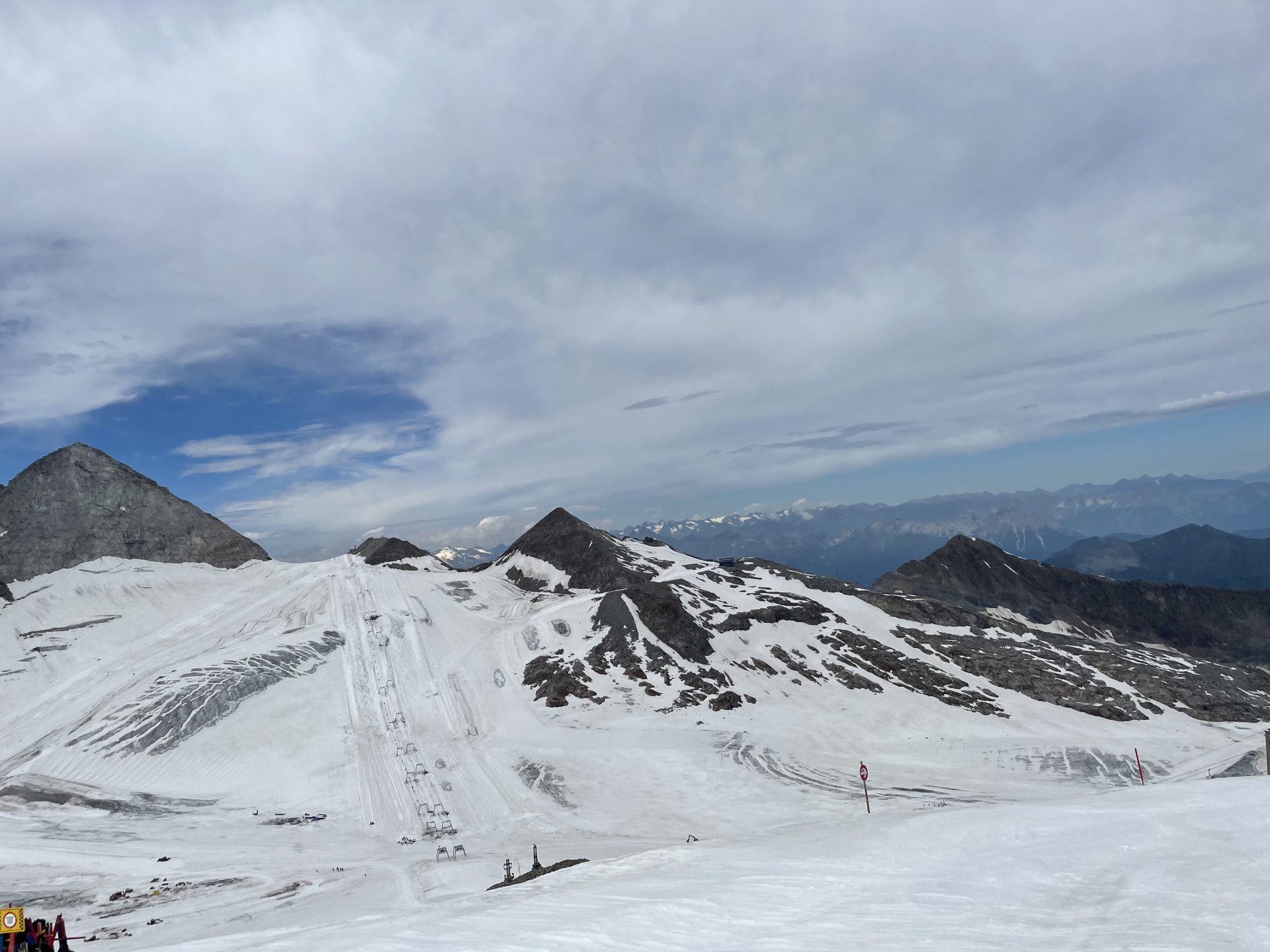
 It never gets old: another view of the Hintertux snowfields. Source: David Michael
It never gets old: another view of the Hintertux snowfields. Source: David Michael
